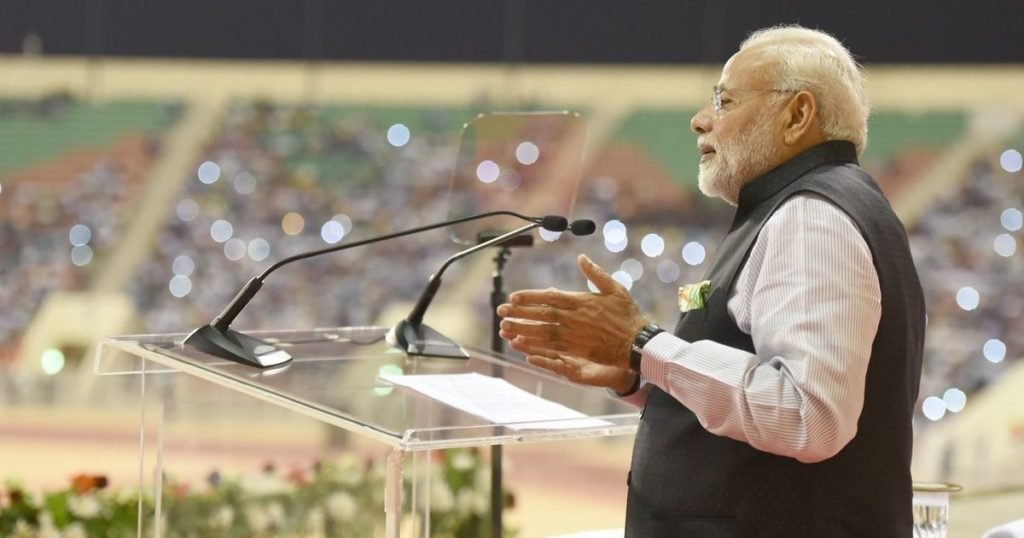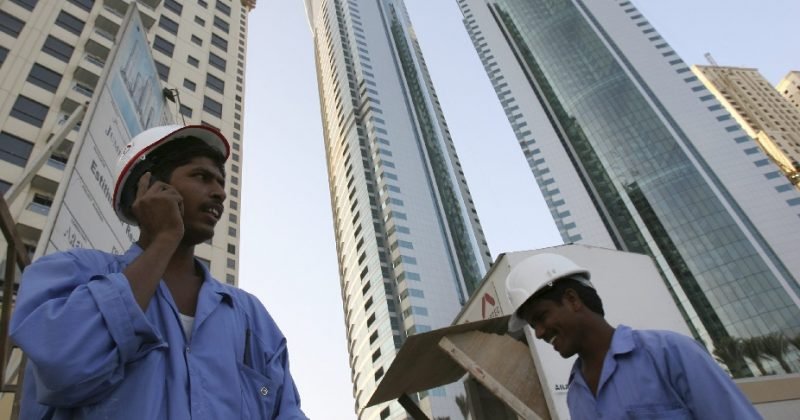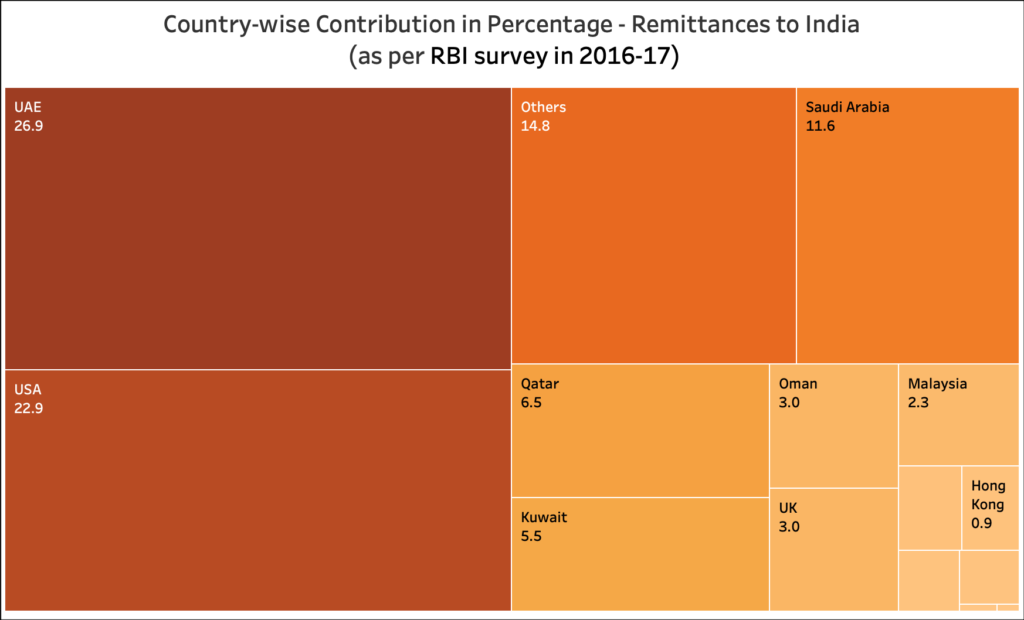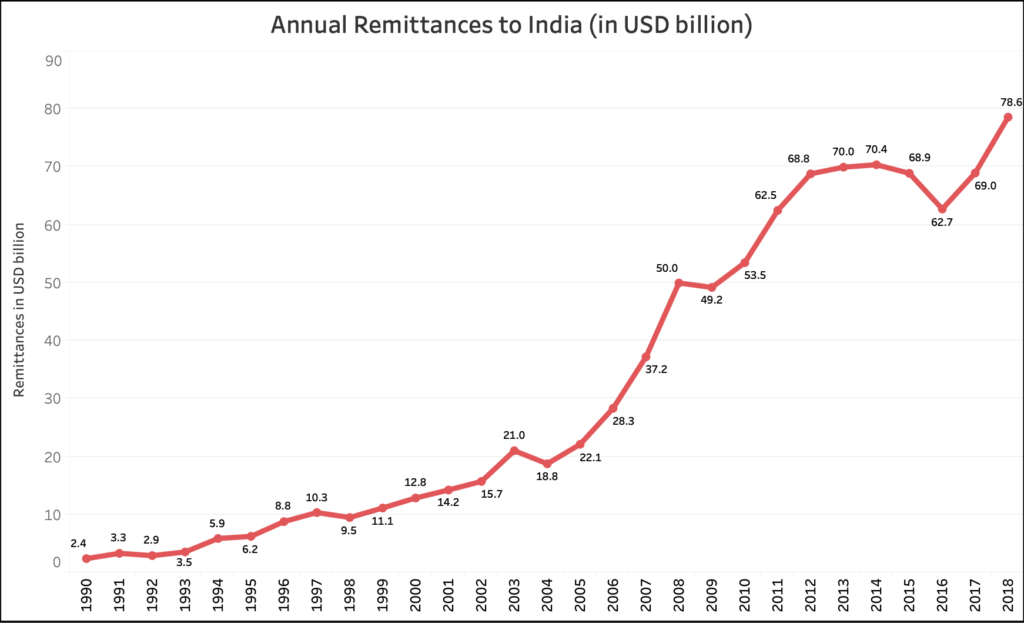Indian Diaspora in the Middle East

Today, we live in a world which is more globalized than ever before. Globalization has brought about changes in the world, which had never been thought before. It has turned the world into a closely-knit community. However, contrary to common belief, globalization is not just about greater economic and political cooperation, increased trade between countries or rapidly increasing Foreign Direct Investment (FDI). One of the most important byproducts of Globalization is the extensive movement and settlement of people from one part of the world to another.
This has consequently resulted in the formation of Diasporas across the world. And the Indian Diaspora is no different. In this article, we will discuss the Indian Diaspora in the Middle East and its social, political and economic significance. Indian Diaspora in the Middle East constitutes approximately Nine Million people and is one of the largest in the world.

Diaspora can be defined as a group of people who can either trace their origins to India or who are Indian citizens living abroad either temporarily or permanently. In the case of India, there is a common apprehension that the Diaspora is only constituted of the Non-Residential Indians (NRIs). However, the Diaspora is a much larger community of persons, consisting of Non- Residential Indians (NRIs) along with Persons of Indian origin (PIO) and Overseas Indian Citizens (OICs). The Diaspora serves as a very important form of linkage between different countries. In this article, we will talk about the Indian Diaspora in the Middle East, and how it has influenced India’s relations with the Middle East.
To understand the significance of the Diaspora in Foreign Relations, it is essential to understand the historical aspects of how the Diaspora was formed.
As mentioned earlier, the Indian Diaspora in the Middle East comprises a staggering number of almost nine million individuals. However, the formation of the Diaspora has been a gradual process, which has been mainly driven by the expanding oil industry. Emigration from India to the Middle East rapidly increased when Middle Eastern oil gained global prominence and enjoyed a boom in the 1970s.
The growth of the oil industry created significant pull factors, primarily vast employment opportunities, ranging from workers for the oil fields to even skilled engineers. And eventually, with the rapid development of the Middle East riding on the booming oil industry, people are moving to countries like Saudi Arabia, Qatar, UAE, and Oman and so on, to work in varied fields like Banking, Information & Technology, Business, et cetera. Hence, factors like these, have led to the gradual formation of a culturally and economically rich Indian Diaspora in the Middle East.

It is important to note that, a Diaspora has major political and social connotations attached to it. With respect to, International Politics, the Diaspora serves as an essential soft power advantage for the home country. Initially, after independence, the Indian government adopted a non-interventionist policy towards its Diaspora, but post 1990, as India adopted a liberalized policy structure, it also changed its approach towards the Diaspora community. India already has inherent sources of soft power like Yoga, Ayurveda, Sports, Bollywood movies, and so on and the Indian Diaspora play a significant role in spreading these across the Middle East.
Moreover, the Diaspora also has considerable influence on the bilateral relations between the two countries. For instance, the existence of a huge Indian community in Saudi Arabia and its contribution to the economy will encourage the Saudi Arabian Government to improve ties with India. Hence, it is essential for the Indian Government to ensure the well being of the Diaspora either through appropriate policy measures or by engaging in dialogue and deliberations with the Middle East and improving ties with the Arab nations, not just because they retain cultural linkages, but more importantly because they give India a soft power advantage in the region.

However, the most important aspect of a Diaspora is its economic significance to the home country. Similarly, India’s relations with its Diaspora in the Middle East are largely influenced by its economic dimensions. Remittances received from NRIs are one of the most essential sources of foreign exchange inflow into the country. Remittances can be defined as funds transferred by migrant’s workers working abroad, to their home countries. With its huge Diaspora, India is the largest receiver of remittances worldwide, with receipts of almost 83 Billion USD, as per a World Bank Report. More than 50% of this amount flows into India from the Middle East.
Remittances hold immense utility, especially for developing countries like India. Apart from being a major source of foreign exchange, these cash inflows also provide the governments with significant funds to be invested in development projects, without borrowing from other countries or organizations like the World Bank or IMF, which would increase the fiscal deficit for these economies. In many cases, the remittances also form a considerable proportion of the GDP. In the past two decades, we have seen a positive trend in the inflow of remittances and with the adoption of Look West Policy under the Current Indian government along with the Prime Minister’s greater attention towards its Diaspora, in the Middle East, remittances were expected to further increase. But, owing to the worldwide pandemic, along with trade and travel restrictions, the World Bank has a project that remittances inflows to India can fall by as much as 23% in the coming fiscal year, which may prove to be another nail in the coffin for the Indian economy, which has been adversely affected by the Covid19 outbreak.

Indian Diaspora hasn’t always been an integral part of India’s foreign or economic policy. After liberalization in 1991, India has made attempts to engage with the Diaspora. And, with the coming of the BJP government to power, there has been a paradigm shift in India’s policy approach towards its Diaspora, especially in the Middle East. Indian Prime Minister’s regular visits to the Gulf and consequent interactions with the Indian Diaspora there have fuelled fresh relations with Indians based in the Middle East.
The rapid increase in remittance inflows in recent years are also a reflection of this. Moreover, the Indian government should also create incentives for the Indian Diaspora to make investments in their homeland, which will also help in the development of the home country in the long run.



















